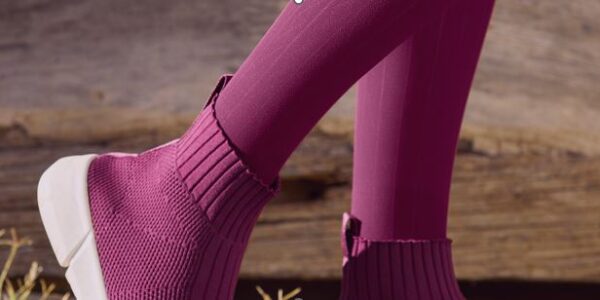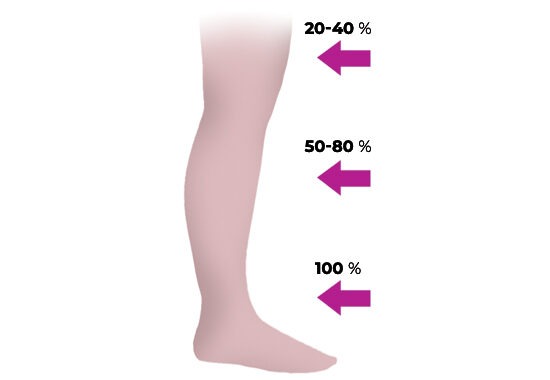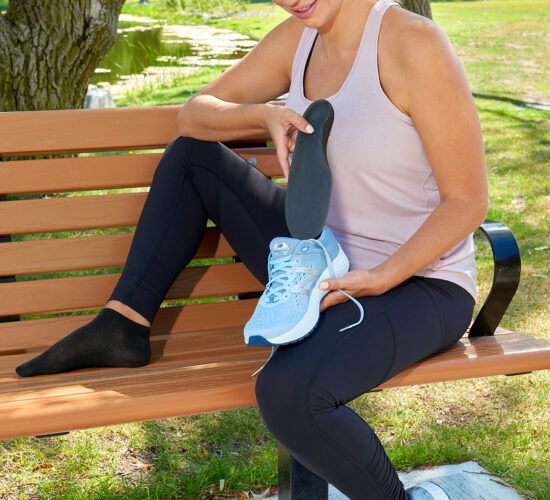Are all compression stockings the same?
There are compression stockings for different purposes. Athletes can benefit from them just as much as seniors—for completely different reasons.
Comfort stockings
As the name suggests, these socks are comfortable. They fit feet and legs of almost any size and shape without restricting circulation. They’re great for people with diabetes or swollen legs. They’re so comfortable because, among other things, they are:
- Made from cotton, merino wool or linen (nice for sensitive skin)
- Breathable
- Soft
Comfort compression stockings are also easy to put on, take off and care for. These must-haves are available in a range of models. See comfort stocking models
Fashion stockings
They are intended for people with mild edema and designed to be versatile. Our fashion stockings are available in a wide selection of fabrics, patterns and colours to complement your professional attire (skirts, dresses, suits) and casual outfits (shorts, city shoes).
They look just like conventional nylon stockings. They are often recommended for pregnant people and people who work for long periods standing or sitting.
See fashion stocking models
Sport stockings
Athletes wear compression stockings for a number of reasons. These include improved performance, injury prevention, comfort and support during recovery.
Compression stockings for sports are designed with highly innovative technology that:
- Reduces vibration from impact with the ground
- Decreases the risk of periostitis
- Prevents calf cramps
- Avoids lactic acid build-up in muscle tissue
They are also highly breathable and dry quickly. Different models are made from high-quality polyester, polyamide or spandex fibres. Take good care of them to preserve their properties for as long as possible.
See sport stocking models
Therapeutic stockings
Therapeutic compression stockings are used to treat various conditions. They are specifically designed to reduce the symptoms and prevent complications of certain disorders.
Diabetes: People with diabetes are vulnerable to a variety of foot conditions, and therapeutic stockings are a proven preventive ally.
Venous ulcers: Compression is the first-line treatment for venous ulcers (or varicose ulcers). It can also avoid the need for weekly bandages.
Thromboembolism: When worn properly, therapeutic compression stockings reduce coagulation from thromboembolism. Generally, high-tension stockings are suggested. They must be worn continuously to narrow the vein diameter and speed up blood flow.
Lymphedema: A stocking with flat-knit compression fabric is suggested as the garment of choice for lymphedema. When the affected limb stabilizes and symptoms are in the first stage, a circular knit may be considered, depending on the weave and tension level.











